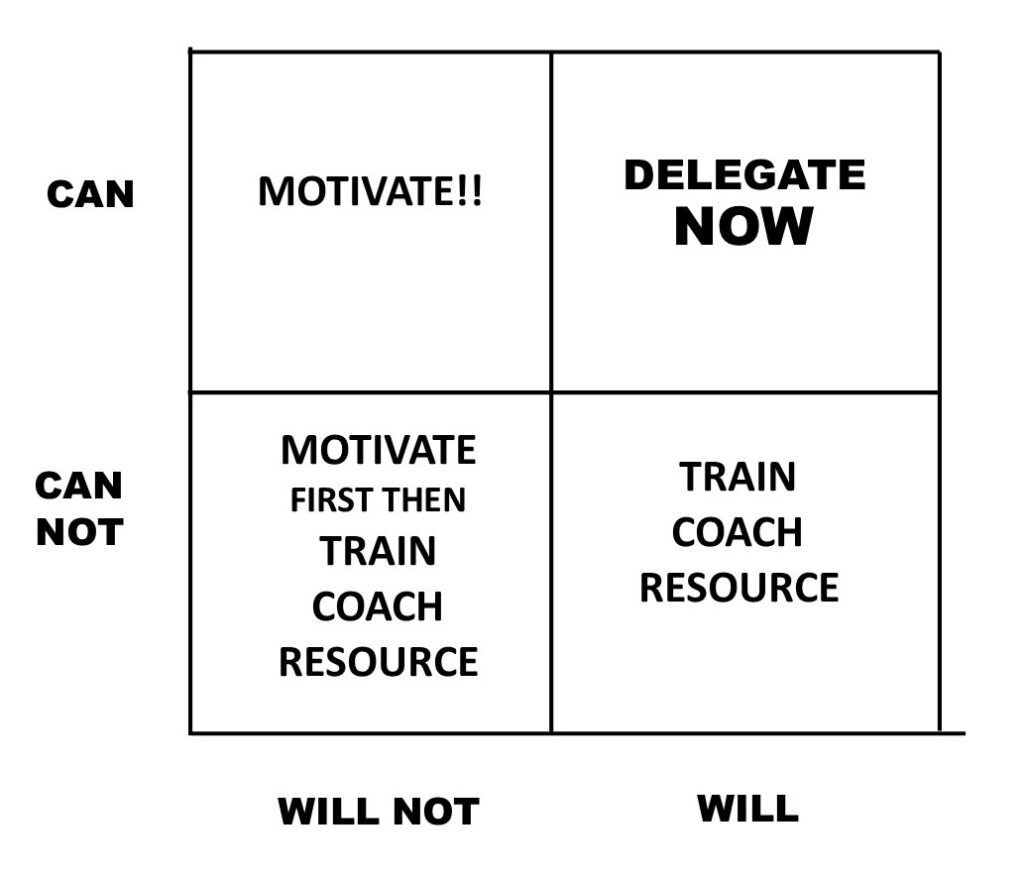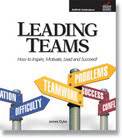Jack Zenger is one of my favorite leadership and management “thinkers.” He and his partner, Joseph Folkman, recently conducted a study on the two key approaches to leadership and management efforts they termed, “push” and “pull.” They wanted to determine which approach (or combination thereof) is most conducive to positive results. They published their findings in a recent issue of the Harvard Business Review, and the insights are worth exploring and applying!
Here’s how they explained the focus of their study:
When you see a task that needs to be accomplished by your team, do you “push” them to get it done or do you “pull” them in, giving them a say in how they carry it out and using inspiration and motivation to get them going? These are two very different approaches to reach a goal, and the latter is often the best one, but knowing how to combine these two paths is an important skill for managers and leaders.
Here’s the important point:
…knowing how to combine these two paths is an important skill for managers and leaders.
Defining the Terms
I’m going to use the definitions that Zenger and Folkman provide…
PUSHING means “driving for results.” It involves giving direction, telling people what to do, establishing a deadline, and generally holding others accountable. It is on the “authoritarian” end of the leadership style spectrum.
PULLING means “inspiring and motivating others.” It involves describing to a direct report a needed task, explaining the underlying reason for it, seeing what ideas they might have on how to best accomplish it, and asking if they are willing to take it on. The leader can further enhance the pull by describing what this project might do for the employee’s development. Ideally, the leader’s energy and enthusiasm for the goal are contagious.
Their study gathered data from over 100,000 leaders through a specially designed 360-degree assessments. They measured both push and pull and found that 76% of the leaders were rated by their peers as more competent at pushing than pulling. Only 22% of the leaders were rated as better at pulling, and a mere 2% were rated as equal on both skills.
They also asked the people rating those leaders (over 1.6 million people) which skill was more important for a leader to do well to be successful in their current job. Pulling (inspiring others) was rated as the most important, while pushing (driving for results) was rated as fifth most important.
The Key Take-Away
Here’s what Zenger and Folkman discovered:
While our data is clear that most leaders could benefit from improving their ability to pull or inspire others, our research revealed that leaders who were effective at both pushing and pulling were ultimately the most effective.
Once again, effective leadership style was shown to be situational in nature!
Here’s how they put it:
…your influence as a leader comes from your ability to know when to use which approach, depending on the task, the timing, and the people.
So…this begs the obvious question:
How do you know when to use which approach????
Ah yes, my Padawan! This is truly the path to wisdom and leadership success!
To help you answer that question, I am going to use the next two articles to present 2 Management Models to guide your thinking as you analyze each management situation. The first model is what I call, Can They? / Will They?
Model #1 – Can They? / Will They?
I wrote about this in more complete detail in a previous article. You can access it here: https://thebossdoctor.net/2021/can-they-will-they
Can They? Is the question of COMPETENCE—Can they do the job? Can they fulfill the assignment? Do they have sufficient skill, training, resource, authority?
Will They? Is the question of MOTIVATION—Are they willing to do the job? Are they engaged enough to take on the assignment with sufficient energy and determination?
The answers to these questions determine what the boss needs to do, to effectively manage the performance of a subordinate. The answers also inform the question of which approach to use: Pushing? Pulling? A Combination of the two? The graphic below summarizes a manager’s appropriate response, in each case:
CAN / WILL is the ideal combination of answers to these questions.
The manager is ready to give this subordinate an assignment because the worker CAN do the job (they have the skills and resources necessary) and the employee is WILLING to do the job (they are motivated to take on the assignment and see it through successfully). In this case, the manager can go ahead and apply basic management oversight to ensure a clear assignment and a successful outcome.
The appropriate approach in this case is pulling—reinforcing the worker’s motivation and giving them latitude to take action that is fitting for their level of skill.
CAN NOT / WILL is less than ideal, but offers the assigning manager a clear path forward.
In this case, a willing employee needs training or coaching or resourcing of some kind in order to take on the assignment successfully. The boss must determine exactly what prevents the employee from performing and address each need specifically and practically. That might include things like:
- Permission to act (official authorization of some kind)
- Authority to act
- Training
- Coaching
- Equipment of some kind
- Budget
- Additional personnel
- Cooperation from another team or department
- Possibly the ability to put other assignments on hold in order to take on the new assignment
This situation requires mostly pushing – Providing needed resources, direction, coaching, training, clear expectations, and a plan going forward with appropriate oversight.
The advantage of CAN NOT / WILL is that the toughest part of delegation is already a given—employee motivation.
CAN / WILL NOT is a bit of a challenge.
The subordinate has the skills and resources to succeed. But the delegating manager must find a way to connect with the employee’s personal and internal incentives, to ensure they have the will and determination to take on the assignment and complete it successfully.
In this situation, a combination approach makes sense…
Pushing – Making a clear case for the necessity, importance, and priority of the assignment; establishing clear goals, deadlines, and expectations; underscoring the impact of the assignment on team and organizational success. THE CHALLENGE here is one of human nature—the more you push, the more likely the employee is to push back and resist. That’s why a wise manager will add some pulling to the mix:
Pulling – Tapping into the employee’s priority of internal incentives and self-interest (e.g. professional success, advancement, remuneration, status, reputation, future with the organization). And engaging them in active participation in various aspects of the assignment where it fits their level of skill—e.g. exercising creative problem-solving, choosing how to go forward, exercising initiative, having access to delegated authority.
Here’s the challenge: Internal incentives are highly individualized and vary from person-to-person. A manager has to know each subordinate well enough to understand their particular internal motivational “buttons.”
CAN NOT / WILL NOT is the most challenging combination.
This is the employee who lacks skill and is unmotivated to work! (Some parents out there might be thinking, “That sounds like my teenage kid!”). The manager’s proper response begins with the correct answer to the question:
Which comes first—COMPETENCE or MOTIVATION??
Does it make sense to try and train an unmotivated person? The answer is obvious: FIRST you must motivate the worker; THEN you can more easily provide the necessary training and resourcing!
Once again, a combination approach makes the most sense:
Pulling – Tapping into the employee’s priority of internal incentives and self-interest (e.g. professional success, advancement, remuneration, status, reputation, future with the organization).
Pushing – Making a clear case for the necessity, importance, and priority of the assignment; then providing needed direction, coaching, training, clear expectations, and a plan going forward with appropriate oversight.
The advantage of The Can They? / Will They? Model is that it provides a manager with an objective approach to analyzing each management situation. Granted, the categories of ability and motivation are quite large, encompassing a large variety of elements under each heading. The thoughtful manager must be ready to consider a host of details when making a judgment about any given situation. Alas, that is the challenge of a management role!
In the next installment, I will introduce a second model that will prove helpful as well. Stay tuned!
And if you would like help with your unique management challenges, leave a comment and your contact information…and help will be on the way!
Until next time… Yours for better leaders and better organizations,
Dr. Jim Dyke – “The Boss Doctor” ™ helping you to BE a better boss and to HAVE a better boss!







